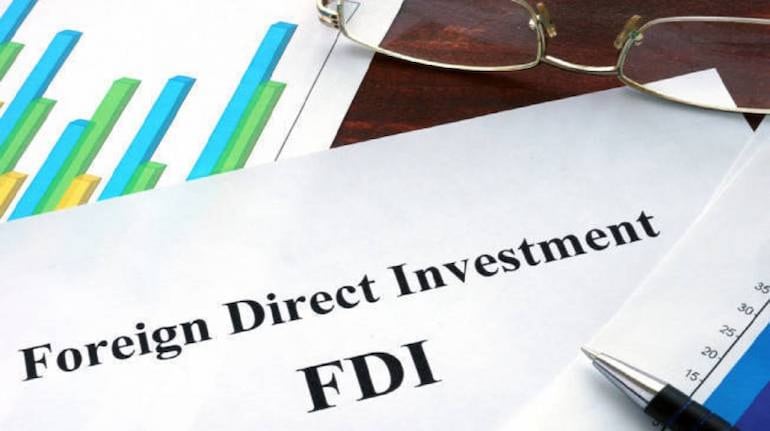



India with its rapid GDP growth of $3.5 trillion, a population of 1.4 billion, along with an abundant supply of workers and favourable geopolitical dynamics -- presents an attractive option for countries and corporations seeking to reduce their reliance on China. As they seek alternative suppliers capable of matching China in pricing and scale, India emerges as a prime destination for foreign investors, checking all the right boxes.
Yet FDI inflows into India have been slowing down. According to RBI data, India’s gross FDI inflows in the first six months of current financial year stood at a meagre $10.1 billion. As a percentage of its GDP, gross FDI inflows fell to 1 percent, while net FDI fell to 0.6 percent in this period. In comparison, this ratio is a whopping 4.5 percent for Vietnam.
Furthermore, as much as 60 percent of Vietnam’s FDI inflows go to its manufacturing sector, compared to not even 20-25 percent in India. This is despite manufacturing being the focus of government policy measures that include among others, slashed corporation tax (17 percent for new manufacturing units), increased import duties to protect indigenous manufacturers from competitively priced imports, and a generous production linked incentive (PLI) to support Make in India.
Attracting Foreign Investment
Part of the slowdown in India’s FDI inflows can be attributed to increasing inward orientation globally. Nevertheless, slowing global FDI flows can’t fully explain the sharp contraction in India’s foreign investment inflows. The fact remains that foreign investors don’t seem to be as excited about India as we Indians expect them to be.
To make matters worse, it is occurring at a time when domestic savings are at a five-decade low. That increases the relative importance of foreign investments in boosting lndia's overall investment rates and, in turn, its GDP growth. Moreover, FDI is not only about additional foreign capital but also about global expertise, technologies and know-how, making it extremely desirable.
Besides, it also gives a boost to a country’s exports as most of the global trade happens between the different branches of transnational corporations.
Genesis of the Problem
Despite efforts to create a business-friendly tax regime in India, uncertainties related to tax liabilities of businesses persist, as evident from frequent tax notices that often fail the test of judicial scrutiny. Similarly, obtaining incentives or tax refunds from government departments is cumbersome. Despite digitisation, bureaucratic interfaces slow down things and complicate processes under the guise of preventing fraud and misuse. As a result, there is a gap in official and real ease of doing business. Enforcing contracts is particularly burdensome and costly due to the sluggish judiciary. Moreover, ambiguous rules and regulations lead to varying interpretations, raising the cost of doing business for foreign companies.
Indian customs and related departments such as DGFT remain indifferent to the woes of exporters. Arbitrary export-import regulations cause supply chain shocks and deter foreign investors especially in the absence of bilateral investment protection treaties that safeguard them from unfavourable policy changes. Similarly, steadily increasing import barriers have increased the relative attractiveness of the domestic market that offers higher margins thereby discouraging exports in a country whose export basket is dominated by undifferentiated commodities with little pricing power. RBI’s obsession to defend rupee creates further complications by making Indian merchandise price-uncompetitive in overseas markets.
Moreover, lndia’s neglect of free trade deals is a major factor behind why foreign investors don’t find India attractive enough despite its large and steading growing domestic market supported by one of the fastest GDP growth rates globally. As production networks require frequent cross border movements of inputs and components, a lack of FTAs discourages foreign investors looking to make India as their manufacturing and exporting base. That explains why contrary to expectations, India has not really benefited from the “China plus one” strategy.
Things can still work if domestic demand is sufficient. However, the size of domestic demand is often overestimated if not exaggerated when it comes to the sale of relatively expensive discretionary goods and services. Media reports often highlight the surge in sales of luxury homes and expensive cars. However, a sale of 12,935 such homes and 13,303 BMWs in a country of 1.4 billion is not indicative of a significant demand. High effective taxation on households and sticky inflation along with a relative neglect of India’s demand problem is making things worse and deterring prospective investors in the process.
The Way Forward
To conclude, it appears that India is not able to realise its full potential when it comes to attracting long-term foreign capital. Yet, genuine ease of doing business reforms, such as rationalising filing and reporting requirements, expediting investment protection treaties with major FDI supplier countries to minimize regulatory risks, and allowing the rupee to gradually and steadily depreciate to incentivise exports, can help improve India’s attractiveness as an investment destination.
We should not cease supporting indigenous manufacturers by restricting non-essential imports. However, a weaker exchange rate is a far more effective way to control imports than opaque import duties and non-tariff barriers, as it also makes it cheaper for foreign buyers to purchase made-in-India merchandise. Therefore, instead of relying on import barriers to regulate imports and support domestic manufacturers, India should opt for a weaker rupee.
Luckily, India has started to embrace free trade deals and recently concluded such deals with Australia, UAE and EFTA trade block and expected to conclude those with the UK and European Union. That is likely to improve India’s attractiveness as a preferred investment destination, going forward.
Ritesh Kumar Singh is a business economist and CEO, Indonomics Consulting Private Limited, a policy research and advisory startup. He tweets @RiteshEconomist.
Discover the latest Business News, Sensex, and Nifty updates. Obtain Personal Finance insights, tax queries, and expert opinions on Moneycontrol or download the Moneycontrol App to stay updated!
Find the best of Al News in one place, specially curated for you every weekend.
Stay on top of the latest tech trends and biggest startup news.